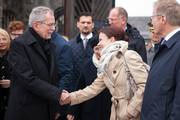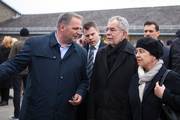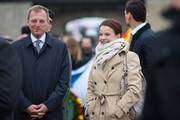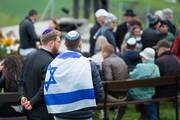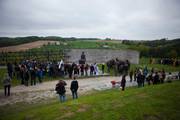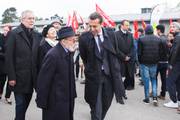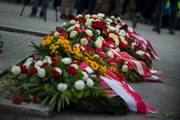Looking Back upon the Memorial and Liberation Ceremonies 2017
09.05.2017
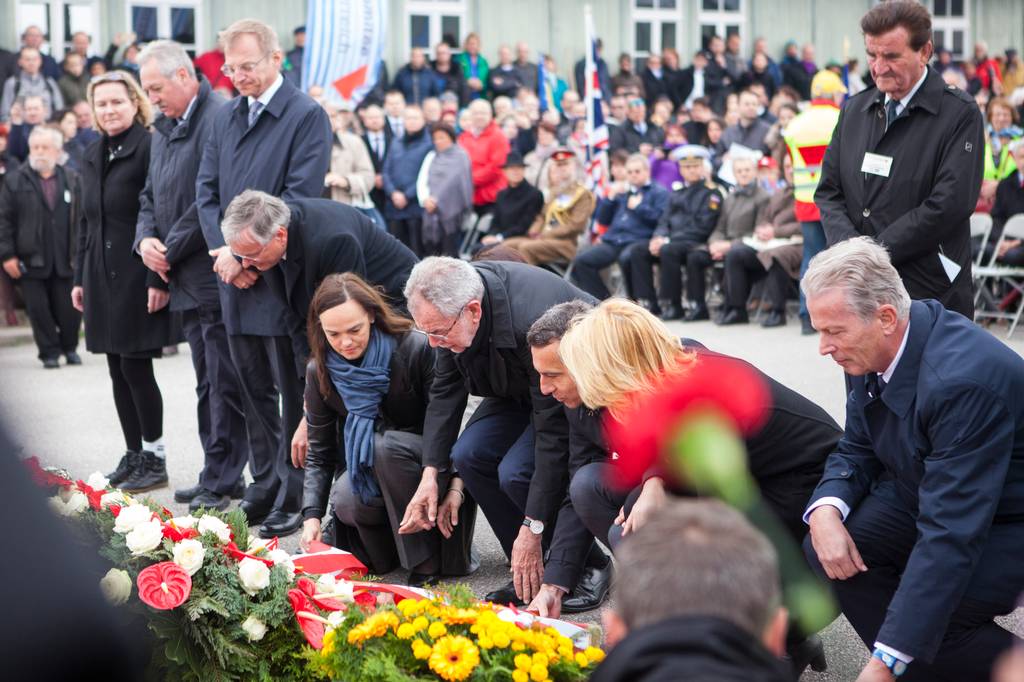
Commemoration and Liberation Ceremony at the Mauthausen Memorial
Around 7,000 people from all over the world gathered at the Mauthausen Memorial on 7 May 2017 to commemorate the liberation of the Mauthausen concentration camp 72 years ago. ‘Internationality Unites’ was the motto of this year’s Commemoration and Liberation Ceremony, which was organised by the Mauthausen Komitee Österreich (MKÖ) in close collaboration with the Österreichischen Lagergemeinschaft Mauthausen (ÖLM) and the Comité International de Mauthausen (CIM).
Internationality in commemoration and local people’s active participation formed the common threads running through the ceremony, which was attended by the federal president, Alexander Van der Bellen, several members of the federal government and representatives of international delegations. ‘We have to work together to create a world in which human rights, freedom and respect are guaranteed’, said President Alexander Van der Bellen. Every speaker rejected nationalism and called for values such as solidarity and tolerance. Aba Lewit, a survivor of the Mauthausen concentration camp, gave young people a piece of advice: to read between the lines. Not to fall for promises. ‘Don’t fall for the enticements offered by populists. Funnily enough, things never change: people don’t learn.’ They would believe the promises, and yet a populist is only a better sort of fascist, said Lewit.
The march out of the former ‘protective custody camp’ at the end of the ceremony by all the participants was led by the survivors – as a symbolic act of liberation. Afterwards, guests were invited by the Mauthausen Memorial and young people to attend a reception in honour of all the survivors entitled ‘We are the next generation’. ‘It is important that young people understand what happened here and what the site represents today’, said Barbara Glück, director of the Mauthausen Memorial.
Taking the theme ‘What’s it got to do with me?’, the winners of the 2016 Federal Youth Public Speaking Competition spoke about how the fate of the survivors related to them and what they could learn from survivors for their present and future.
‘And if we all speak out with one voice for tolerance and openness, I am convinced that: Our voice will be heard!’ (Simon Rentenberger, prize-winner in the category Classical Speech Making)
Commemoration and Liberation Ceremonies at the Sites of Former Subcamps and Nazi Terror
In addition to Europe’s biggest international liberation ceremony in Mauthausen, a large number of memorial events also took place at the sites of former subcamps of the Mauthausen concentration camp, such as Gusen, Ebensee, Melk, Ried in der Riedmark, Steyr and Weißkirchen. In Ebensee, the writer Robert Menasse gave a talk in which he warned against incipient nationalism. The event in Weißkirchen was attended by 31 members of the family of Alexander Zisha, a prisoner of Mauthausen buried in a mass grave in Weißkirchen. In Gusen, Alexander Van der Bellen’s participation made it the first time that a serving head of state had attended the ceremony.
Most of these memorial events were organised by local associations and initiatives in close cooperation with the Mauthausen Komitee Österreich. They were attended by large numbers of people from the surrounding region as well as visitors from several European countries.
‘Bergkristall’ Tunnel Complex
Before the liberation ceremonies in Mauthausen and Gusen, around 1,000 visitors had the chance to view the underground site of the ‘Bergkristall – KZ Gusen II’ tunnel system. Many local residents also took this opportunity to engage with the history of their home town.
The tours began with an introduction to the National Socialists’ politics of persecution, the Mauthausen-Gusen concentration camp system, and to those who profited from the use of forced labour. During guided tours of the tunnel complex, witness testimonies were used to discuss the conditions under which prisoners lived and worked.
